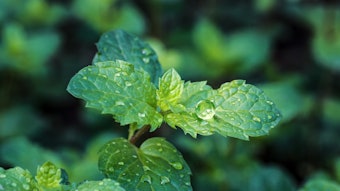
All mints (known as Pudina in Hindi) are Mentha species that are members of the Labiatae or Lamiaceae family. There are 18 Mentha species and 11 hybrids (Tucker and Naczi, 2007) that are either cultivated or found in their natural habitat, which results in a wide compositional diversity found both within and among the species. Consequently, all commercial mint oils produced are from cultivated species or hybrids.
All Mentha species are perennial, herbaceous plants with opposite leaves and quadrangular stems. They possess capitate, spicate or verticillate flowers that range in color from white to purple. The leaves contain both capitate and peltate glandular trichomes within which the essential oils can be found. All of the Mentha species cultivated for oil isolation are either sterile, or if they produce seeds, they are still clonally reproduced.
A survey of the Mentha species growing in India reveals thatonly two subspecies of Mentha longifolia L. [M. longifolia subsp. hymalaiensis Briq. and M. longifolia subsp. royleana (Benth.) Briq.] have been found to be endemic to the Himalaya region of India. Currently, India cultivates five commercially important mints (Mentha taxa) from which oils are produced.










